SUVs soared in popularity in the 90s. Was it because they held lots of stuff? Were easier to get in and out of than passenger cars? Sat up higher so drivers had better visibility? Projected a tough, macho image? Made you feel as if you’d be safe on any kind of road in any kind of weather? The answer is “yes,” and if the Adventure-Tourer is the two-wheeled equivalent of the SUV, that genre is gaining in popularity for many of the same reasons.
And of course the benchmark for that genre is BMW’s Gelandestrasse (GS) series, now rolling over hill and dale for 30-plus years. That bike’s success has spawned an army of imitators, although none have ever really matched its sales success. But Triumph is never a company to shy away from a challenge—its struggle to make a name in the supersport category was a decade-long epic—so behold the Explorer 1200 (already the subject of a favorable MD first ride impression).
Building a better supersport is hard—in the time it takes to develop a new model, the state-of-the-art becomes yesterday’s news. Luckily, the BMW R1200GS is a slower target—its last major update was in 2005, although the motor has been improved since then. Now it’s easy—take what people like about the GS and leave off what they don’t like. Add a little Triumph character, price it lower than the GS and you’re done.
Well, it isn’t really that easy. Triumph’s design team realized it needed a whole new engine, which meant a whole new chassis, and so on. The power-plant is a good one, though—a 1215cc, liquid-cooled, 12-valve Triple (what else?) putting out a claimed 137 horsepower (and you’ll see it again in Triumph’s newly announced 1200 Trophy). Chassis is a tube-steel trellis that puts 59.4 inches between the wheels. Atop that is piled all the features a modern adventure tourer needs—ABS and traction control (standard), adjustable seat (between 33 and 34 inches), 5.3-gallon tank, mega-complete instrumentation, mounts for hard luggage, shaft drive, fully adjustable suspension, and of course, the 19-inch front and 17-inch rear wheel combo that seems to be the choice for pavement-oriented Adventure Tourers like this and the GS.
That’s right: “The Explorer’s a road bike first and foremost,” Triumph Product Manager Simon Warburton told the U.K.’s Motorcycle Sport and Leisure. That means it’s more of a sport-tourer than adventure tourer. Sure, it’ll probably do okay on smooth fire roads and that kind of thing, but that brings me back to the SUV: the dirtbike seating position and tough styling means you can be comfortable without looking like an old dude on a boring bike. The Explorer has a very cushy seat, upright seating position that’s more 1980s UJM than motocrosser and decent wind protection—but it also has the handling, brakes and performance you’d get out of your average sport-tourer, without the weight.
Oh, yeah—weight. If there’s a disadvantage to the Explorer, it’s the bike’s lardiness. You can really feel it when you ride—the bike steers slower than I expected and if you’re a fellow little dude (I’m 5’6″ and 150 pounds) you may also experience the occasional “oh shit” moment when the heft and high seat conspire to make low-speed parking-lot maneuvers treacherous. It’s not unmanageable, but it feels every ounce of its 577-pound claimed wet weight, 60 more pounds than the BMW is packing. What is that, four bowling balls?
So here’s the good part: Not only do you get an extra 35 hp, the power feels much smoother and more refined than the BMW. It’s also instantly accessible in just about any gear, the torque curve is so flat and the vibration so minimal. It’s also pretty good on gas consumption (we saw about 40 mpg on our test, riding a lot of twisty roads at high speeds), and thanks to the new motor design, it will work with 87-octane gas: good news if you want to ride to Baja. If you’re wondering about exhaust heat, don’t: we rode in triple-digit temps and it wasn’t an issue (although we didn’t ride in a traffic jam, off road, or nude).
Also useful if you’re touring: the driveshaft doesn’t require the dreaded regular spline lubing of the BMW and should be quite durable (and major services are 20,000 miles apart). I have heard there are entire micro-economies in Baja that have grown up around BMW driveshaft repair shops. I also noted that the Triumph’s driveshaft geometry prevents squat under acceleration, something very noticeable if you swap between the Triumph and a Paralever-equipped BMW.
Riding the Explorer is a lot like driving a small SUV. It has better carrying capacity and unpaved-road ability than a large standard, has more road presence, offers better visibility for the rider and is very comfortable. Like driving an SUV, at first you want to hold a little more in reserve when it comes to riding fast, but as you get used to the bulk and heft—and the smooth, creamy waves of torque—your confidence mounts and you can corner harder, come off turns faster and ride it like a smaller, more nimble bike. And you can take a passenger (the wide, high passenger seat and humane peg placement make this bike great for pillion riders) as well as a bunch of your crap in the optional locking hard luggage.
So boom! Triumph built a very good motorcycle, one that retains that three-cylinder Tiger character (don’t forget that Hinkley Triumph has been building Tigers since the ’90s) while taking on BMW’s iconic GS. In many ways—power, braking, comfort—the Explorer bests the Beemer, and does it for $15,699, including traction control and ABS (standard). It’s a well-designed product that does the job and will have a loyal following—just like the BMW.
Second Take: Alan Lapp
Gabe and I set off from the sweet-natured, moderate climes of the East Bay into the scorching heat of the Sacramento River Delta on a 2012 Triumph Explorer 1200 for some great riding roads chosen for the minimal frequency of attendance by local constabulary. One-hundred fifty miles, two ferry rides, and countless amber waves of grain later, we had a good sense of how it behaves.
One immediate impression was how the pictures I’ve seen somehow lie to me. The actual bike seems quite a bit bigger than in photos. Perhaps it’s the wheels—19 inches in the front, 17 in the rear, or the sexy single-sided swingarm that fool the eye. Let’s just say that if you’ve been eyeballing the new Explorer on the Internet, and you buy your pants in the husky boys section down at Sears, you might want to look elsewhere for your new adventure bike fix (or you could try adjusting the seat —ed.).
Slot the key into the ignition lock, and about a dozen indicator lamps and a large LCD come to life on the dashboard. There is a lot to appreciate about the Triumph’s dash: the LCD can provide quite a bit of interesting and/or distracting information such as overall fuel economy, and instantaneous mpg. Oh, and air temperature, which will display in Fahrenheit or Celsius if you’re grumpy about the near triple-digit heat—38 degrees just sounds better.
There are enough features on the bike that require fingertip operation that both switch housings are rather crowded. I had to actually search out the kill switch and starter buttons before we could get underway. We didn’t spend much time on the freeway, so I never engaged the electronic cruise control, but I feel it’s a desirable feature for long-distance riding. Speaking of electronics, the Explorer uses throttle-by-wire, and it works in a truly transparent fashion: throttle pull is light, power delivery is smooth, and unlike my KTM 690, which uses a similar system, the motor never does anything you didn’t ask it to do, or fails to do something you did ask for.
On the road, the motor is a delight. It’s not quite as silky as Triumph’s smaller Triples, but it has a very broad spread of meaty power throughout its rev range. Triumph really got it right: it develops gratuitous lunge for passing nearly anywhere on the tach, and yet, it’s a complete pussycat to ride. If a sportbike motor is peaky, then the Explorer motor is the opposite—bear with me while I make up a new moto-journalist cliché—it’s plain-y, or plateau-y or, how about… mesa-y? Whatever you call it, it makes it easy to ride, and enjoyable to flog. The exhaust note is throaty yet subdued.
Handling is surprisingly spry for a 577-pound motorcycle. It’s a fun bike to chuck around corners. The solid, stable, slightly slow steering is confidence inspiring. The Explorer is reasonably well sprung and damped, and the suspension adjusters have a useful range of damping. The brakes are very effective, however, braking feel is somewhat surprising: they have a lot of initial bite, which I consider odd given the nominal off-pavement aspirations of this bike. They’re fine street bike brakes, but off-road, they need to be treated with kid gloves.
Triumph has assembled a comprehensive line of accessories for the Explorer which include luggage, a skid plate, crash bars, driving lights, a tall/soft seat, a tall windscreen and heated hand grips. I’d bet the ranch that the aftermarket is already gearing up to supply additional modifications and farkles to further enhance this already highly-functional bike. And don’t worry—that 950-watt alternator will power just about everything you could want to bring along.
Triumph has clearly painted a big red bullseye on the BMW GS Adventure. From the single-sided swingarm to the rugged, angular lines, they are almost twins separated at birth. One whispers “Macht schnell!” in your ear, the other shouts “Tally ho, old chap!” It’s comfortable, and long-legged. Adventure bikes are the new touring bikes, and I like the change. I could see myself crossing time zones on one of these.
Motorcycle Daily was able to do this story thanks to the generosity of Torsten Jacobsen, who has put a few thousand miles on his spanking-new Explorer. It is equipped with some Triumph factory accessories, including a taller windscreen, crashbars and foglamps.

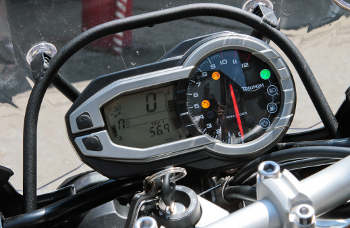
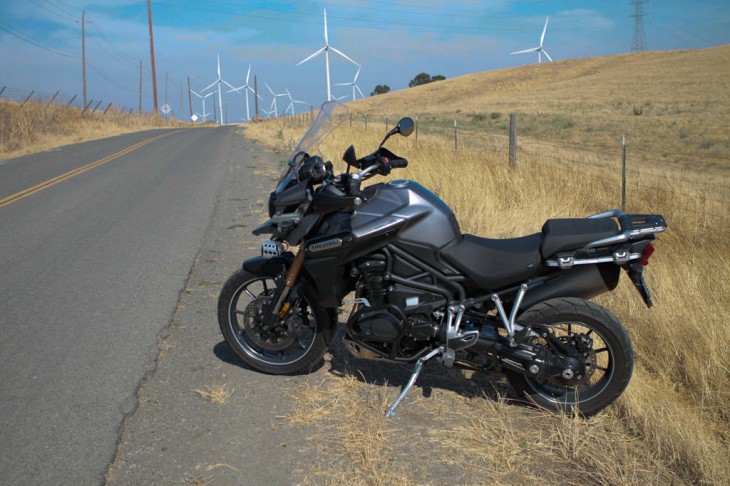

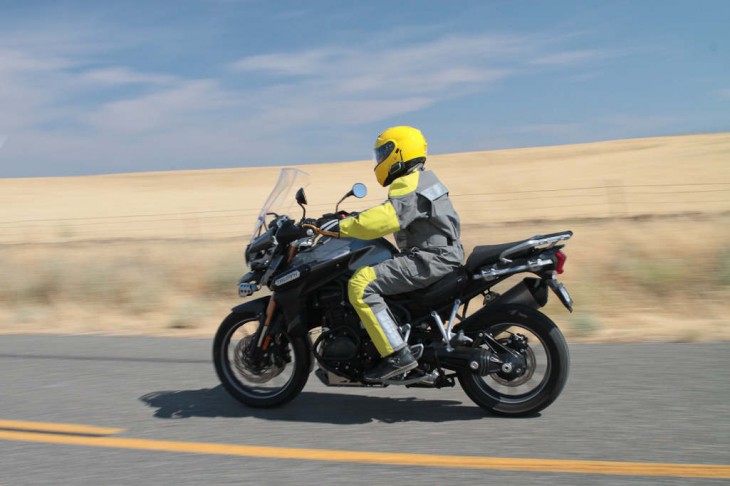

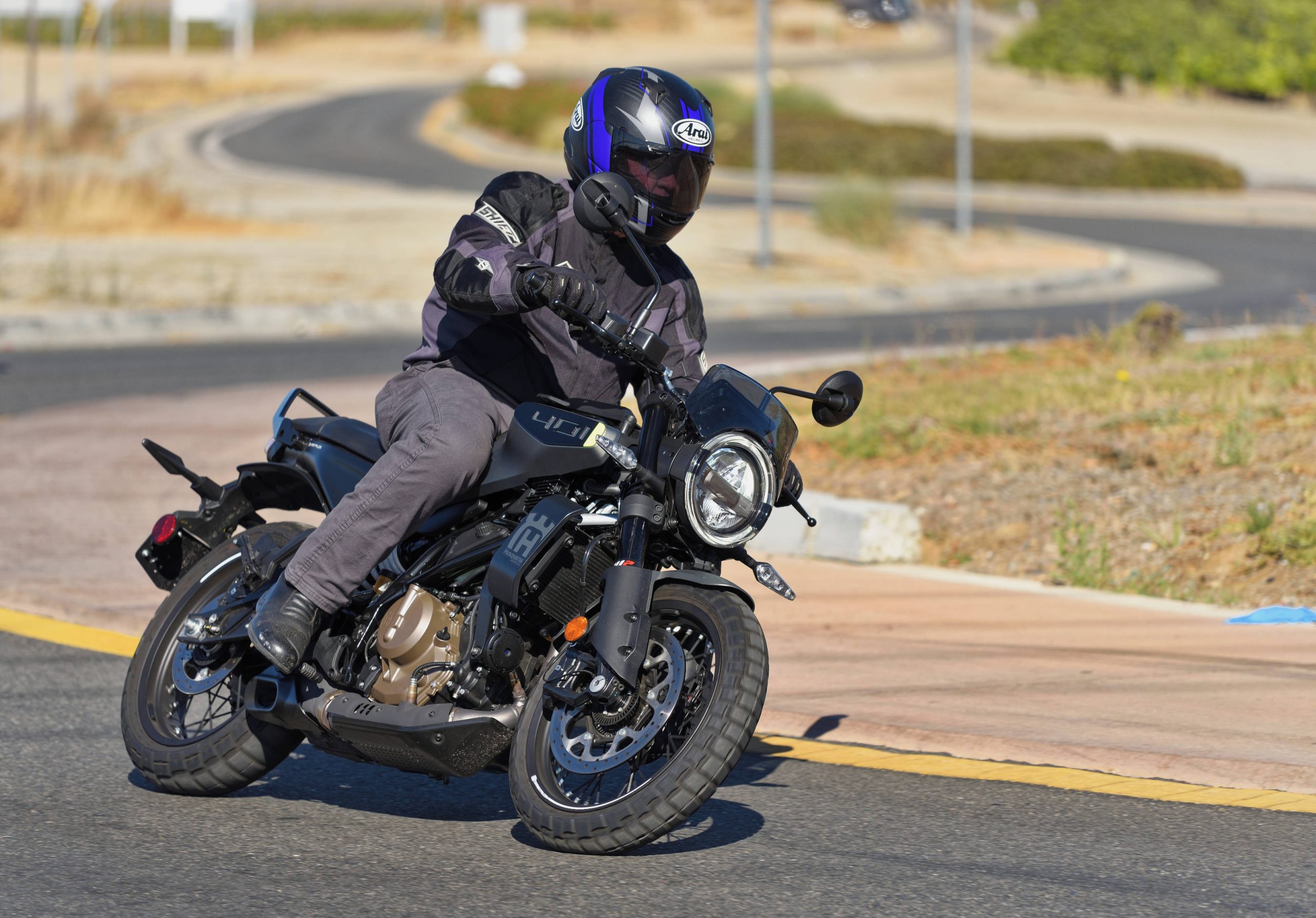
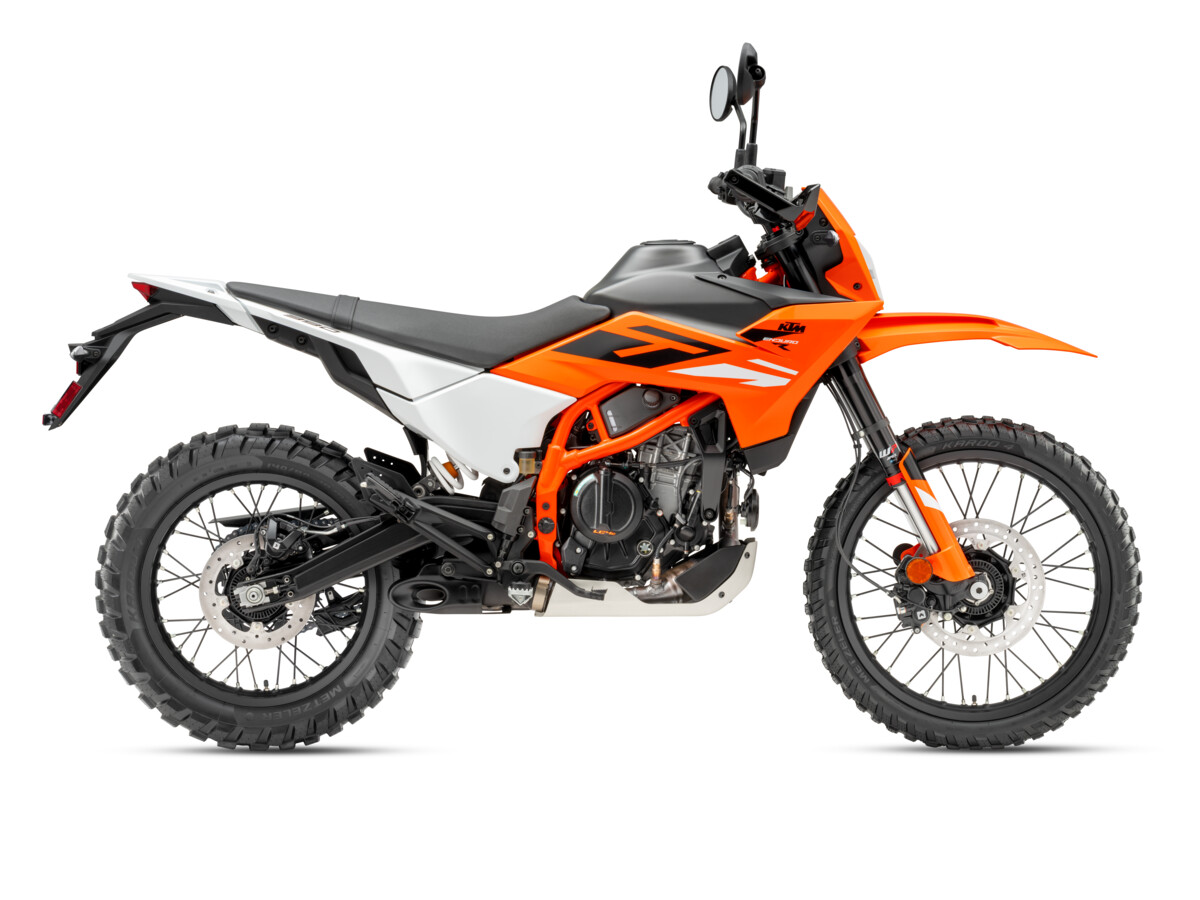
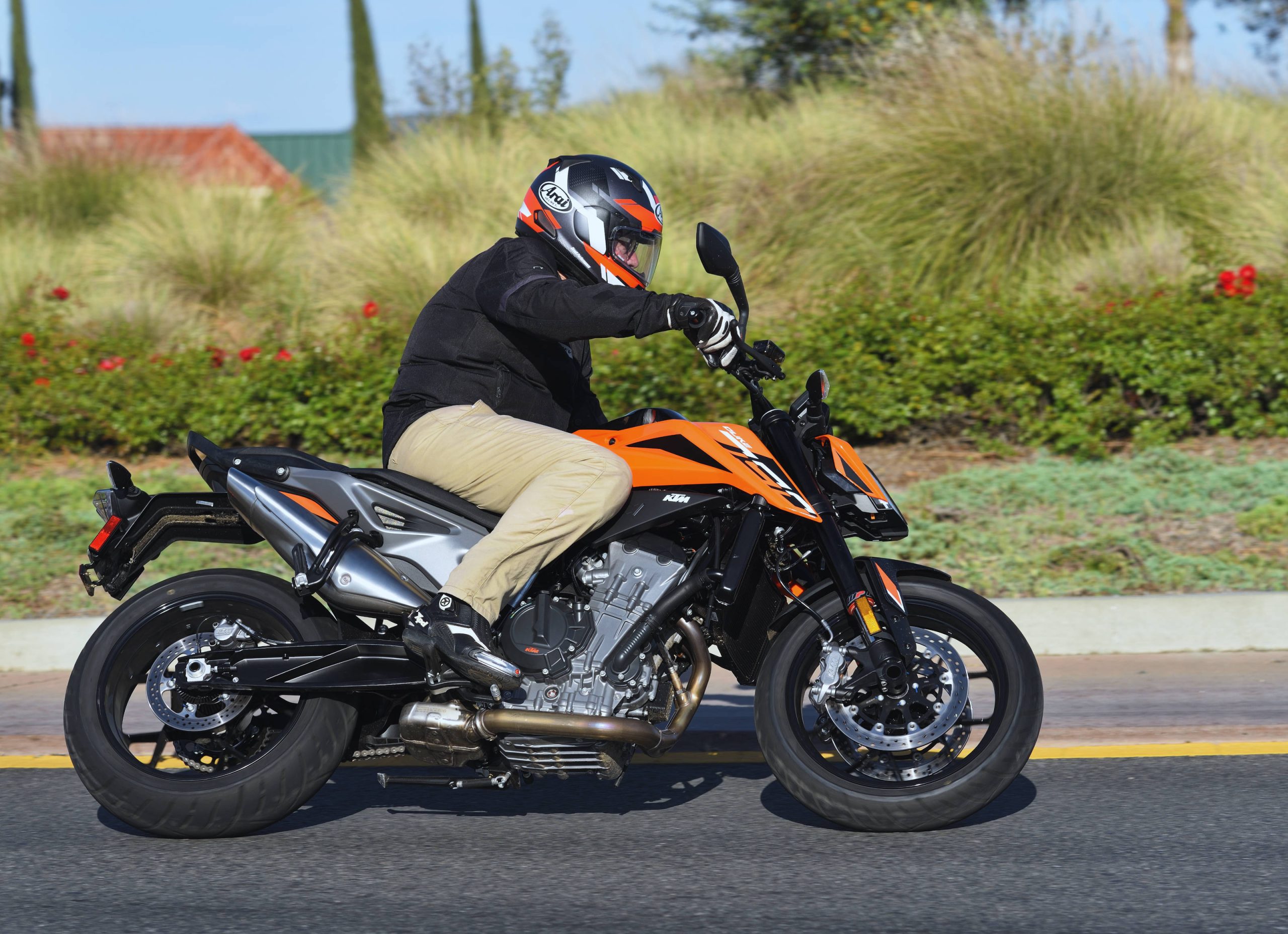
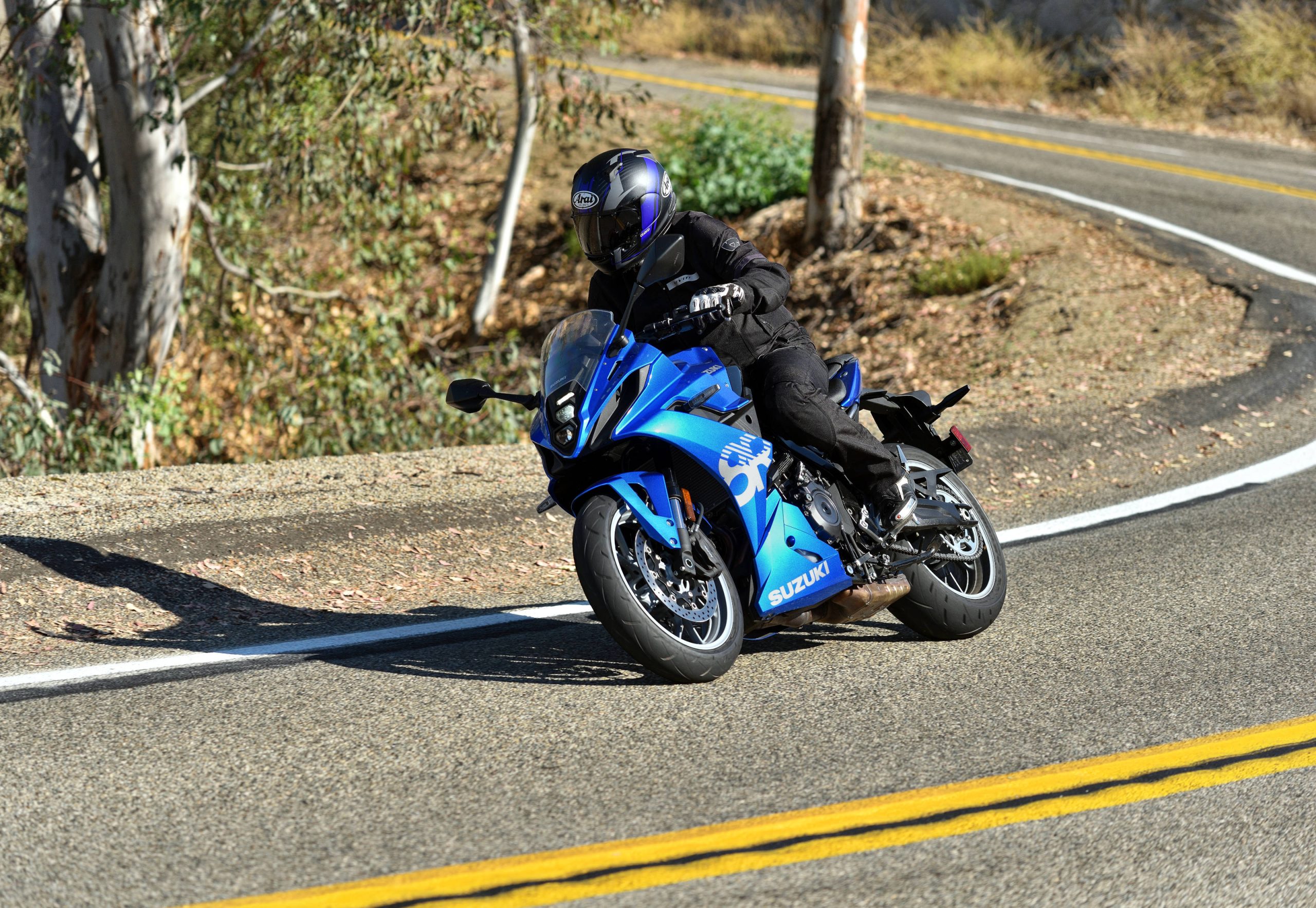
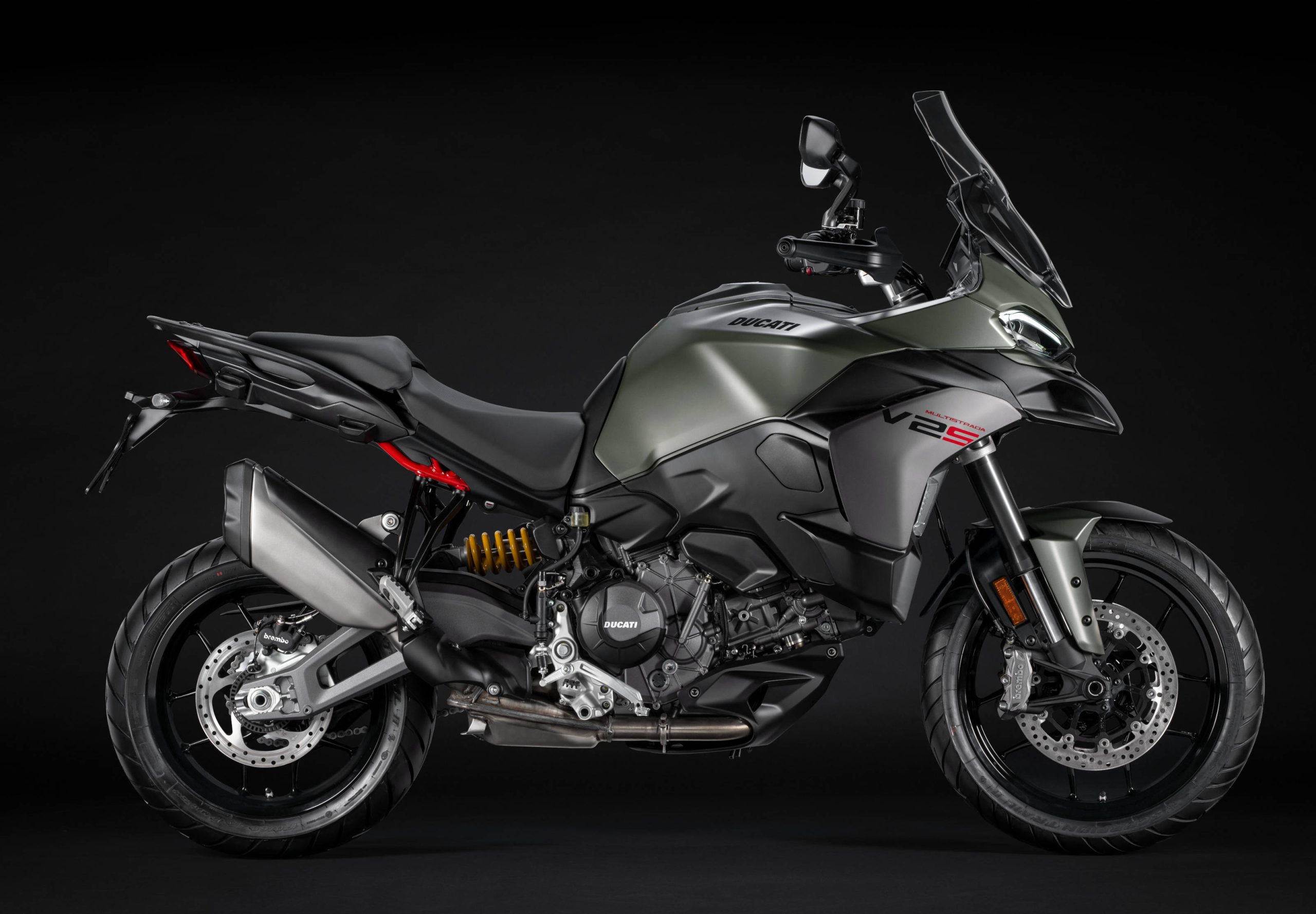
You reported 40 mpg in spirited riding and I’ve read mid-30’s elsewhere. That’s too low in my opinion. Triumph needs to address this if they’re to get my business. A bike of this size and weight should deliver at least mid-40’s and an ability to get into the 50’s under more moderate conditions.
What I’ve seen and read of the upcoming 1215cc Trophy is extremely interesting but if it demonstrates similar fuel economies to the Explorer, I’ll continue to ride my aging but reliable ST1300.
I bought Explorer on May this year, and I have driven it 9500km. I have owned or tested over 250 bikes and my Triumph is not only best bike I have owned ,it is best bike I have ever tested. I’m so odd, that only thing that counts on me ,is how bike rides ,not how it looks or what other ‘Wiseguys’ thinks of it….Greetings from Finland
PLEASE make a 1200 Speed Triple!
This seems a couple of good reviews of what is evidently an excellent motorcycle by any reasonable standard. Unfortunately, I am presently living in an area where a motorcycle just doesn’t make much sense. Not much more sense that it would if I were living in, say Orange County in southern California.
The comments this time around are less negative and less fixated on the fact that bikes of this sort are not true off-road bikes. The irony of these sorts of criticisms is that they are far less appropriate for this sort of bike they would be if made in regards to a big road-only touring bike, and yet make who make these criticisms rarely ever make them in regards to big road-only touring bikes. I am stating the obvious, yet some people continue to make those same silly comments. Yeah, a bike of this sort, as compared to a smaller dual-purpose off-road bike, is not particularly well-suited to off-road biking. Should I say “Duh?” But there can be no doubt that when you encounter the occasional gravel road, or even the occasional well-maintained dirt road, that you will not hesitate on a bike of this sort, but you would on a big road-only touring bike. Again, I feel kind of silly, because I am only stating what is surely obvious to just about everyone, except, evidently, the people who make those silly criticisms about this type of motorcycle. To my way of thinking, if you want something bigger than, say, an 800cc dual-purpose bike, this type of bike is far and away the most practical type.
The only thing that bikes of this type really need are motorized seats that automatically lower by several inches when the speed drops below 5 mph.
I just wish that the Tiger 800 had the same shaft drive setup. I don’t like having to constantly tighten the chain. And just from the standpoint of aesthetics, I just prefer a shaft drive in lieu of a chain. But probably not so much that I would choose this bike over the 800. And of course there is also the BMW 800 to consider. But it weighs about the same as the Tiger 800, and does not have the same power.
Okay, I’ve made up my mind. One of these, and also one Tiger 800XC. Darn it, I forgot. First I have to move back to Colorado.
“But there can be no doubt that when you encounter the occasional gravel road, or even the occasional well-maintained dirt road, that you will not hesitate on a bike of this sort, but you would on a big road-only touring bike.”
Sorry, John … I disagree with your premise. Comparing apples to apples, I think an R1200R will rumble down a dirt or gravel road as well as an R1200GS. Likewise, an SV650 will go off road as well as a 650 V-Strom. Which is to say … not very well. It does not take much time on a real dirt bike to appreciate the huge difference weight can make (pun intended).
To me, big “dual sports” are the two-wheel equivalents of the modern SUV. Off-road in name only.
Apparently you haven’t ridden one. My F800GS has taken me over lots of ratty roads, places where I wouldn’t want to be on anything less dirt worthy than the GS (such as a V-strom, which I have ridden off the pavement). But a dirt bike wouldn’t get me to Utah from California very well, would it? Hammering along for 600 miles on a 530EXC (ridden those, too) to get to the good stuff–no thanks! On my GS I blast along the slab in comfort at 80, enjoy the curves of a nice two-lane highway, then head into the boonies on a rocky two-track and camp in the middle of nowhere. Not everyone rides them that way, but the bike is ready for it. Show me the ‘real dirt bike’ that can do that and I’ll buy one.
Hi Ayk,
Why, yes … yes I have ridden one. Several GSs … and owned a V-strom several years. All great all-around bikes. All lousy off-road bikes.
But I will grant you one thing. A dirt bike is not as good for touring as an adventure sport is for off-road. But then again, I don’t think I’d want to field dress a buck with a butterknife.
Gary, you certainly are correct on the point that weight makes a huge difference. You are not likely to find one person who would disagree. But is this relevant to the question of whether large adventure-touring bikes have real advantage over pavement-only bikes of similar weight? You are claiming in effect that except for when there is an appreciable advantage in weight reduction, there can be no appreciable advantage in off-pavement capability. Let us assume for the moment that this is true. There is no discernible reason why the same would not apply to smaller bikes. A small, light bike designed expressly to be ridden on the pavement would do just as well, in serious off-road circumstances, as a machine that weighs the same but is designed expressly for off-road riding. Why, then, would anyone buy a dirt bike? You can buy a small, light bike that is designed with no consideration for off-pavement riding, and it will be every bit as capable at off-pavement riding as a bike designed expressly for that purpose.
I am curious whether your reply will be responsive to this very sound argument.
The fact is that even without an appreciable advantage in weight reduction, this type of bike is appreciably more capable in off-pavement circumstances, as compared to bikes of similar size and weight that by design are meant only to be ridden on pavement.
I have known more than a few people who own and have owned the R1200GS, and they all swear by them. Moreover, I personally have witnessed people riding these bikes, and I have seen them riding these bikes on gravel roads and even on dirt roads with severe ruts. I personally have witnessed people riding the R1200GS in these circumstances with a level of control and confidence that would be out of the question on a pavement-only bike of similar size.
You simply are confusing the question of whether this type of bike has capabilities that touring bikes of similar size do not have, with the very different question of whether this type of bike is every bit as suitable for serious off-road riding as a small, light dirt bike is. These are two fundamentally different questions.
John is clearly correct. I raced motocross bikes for years, and have tested most of the big enduros. They are very clearly superior to pure street bikes off road…even those of similar weight. Longer suspension travel, greater ground clearance and better ergonomics are just some of the reasons. The biggest single difference might be the larger diameter front wheel (Typically 19 inches, but sometimes 21 inches) that creates, by itself a huge advantage over a bike with a 17 inch front hoop. Not to mention the more dirt-worthy tread on those tires. I have video of some dirt action on Yamaha’s big, 575 pound Super Tenere that I should post to underline the point. Indeed, the Paris Dakar heritage of these bikes makes this a silly argument.
Hi John and Dirk,
Silly as it may seem to you, I’m going to disagree. The fact is, before there were dirtbikes, people stripped fenders off street bikes and went “scrambling.” I know … I was one of them.
And I’ve ridden my share of class-C racers, motocrossers and enduros. I started racing MX in the mid-70s.
I still say an off-road bike that weighs more than 240 lbs is no off-road bike. It is a pig. With lipstick in the form of long-travel suspension.
You can certainly ride them off road and pretend you are racing through Dakar, but the bikes being raced there are about as similar to your GS as Schumacher’s F1 Mercedes is to an E-350.
Coming off a Caponord and R1100GS, I, like most “Adventure Bike” riders wanted a comfortable, better suspended, touring capable machine that will handle bad pavement and twisties. The Trophy 800 was a contender but just not enough power. Answer? I discovered the KTM SMT (super moto travel). If you don’t need off road capability (and 90% of Adventure riders don’t) the SMT has the egros, top drawer suspension, low end torque and power to spare. More of what I use and a lot less lard I did not use.
+1
The visuals of this bike from the photos makes it look HUGE with rider aboard, extremely intimidating to a rider just 5’7″, so thanks to your reviewers for confirming that the visual impression reflects the reality. At 575lbs this outweighs my Honda VFR750F by a full keg of beer, and the VFR is a bit of a pig compared to a lot of water-cooled sport tourers anyway. Can’t imagine getting her upright after a tip over on gravel. I’d be better off with a smaller, 650-800cc dp bike in the stable, BMW has some bikes in that class, triumph and the other makers, not so much . . .
You do realize that Triumph also makes an 800 Tiger? Actually they make two 800 Tigers, one street oriented and a more dirt oriented XC. I’m 5’6″, and with the seats in the low settings, both 800’s fit me great. Wet weight is only 473lbs for the XC version and 463lbs for the street version.
The 800XC is a mighty nice bike. If Triumph had an adventure version of it where it had a bigger tank, tubeless spoked wheels and an inch more travel, I’d have it now.
There’s alot of doubters about the off road ability of this genre of bikes. There’s plenty of evidence that these bikes will go places that your typical streetbike won’t. Yes, there are lighter bikes and enduros that will go further. Do people want a biscuit for pointing this out?
I’ve got a 2006 r1200GS Adventure and I’ve been off raod with people who take these bikes places that the testers here didn’t (wouldn’t?) consider. There are tyre options that will get you even further off the beaten track.
The purpose of thses bikes is their all round nature. They can cruise, scratch, tour, off road and commute. If your own paragign needs more specialisation one one area than another, then there are options. But these bikes are selling well because they run well on all qualities of road surface and can cruise two up with luggage at 80 mph so stresslessly. There’s an image with these bikes that’s popular at the moment, but the main difference between these and SUVs is that they’ll do 40+ mpg when you want.
Count me among the doubters. I know there are folks who take their GS models off road, but I doubt there are many places a GS can go that an R1200R can’t … equipped with similar rubber and some skidplating.
I see bikes like the GS and the Adventures are a rebirth of the old-style standards. Big, comfortable and sporty enough.
To me, an off-road bike that weighs more than 240 lbs is pretty worthless, off-road. But maybe that’s just me.
I’ll prove you wrong about the R1200R. Less suspension travel, lower ground clearance, softer suspension and tire sizes that don’t allow for more agressive rubber and just isn’t built durable enough to take all day long abuse under a full load of gear. Sure, it will go down a countryside gravel road just fine, but so does my Harley and Ninja.
I took my ’98 R1100GS nearly everywhere I took my XL600R and more recent CRF450X, just a lot slower when it got bad. I did the Coronado Trail on it within 3 months of ownership and plenty of backcountry tours in the southern deserts and most of the TAT.
Now I have a new Stelvio NTX and it’s starting to get dirty, as it should. Next month it will be experiencing 8000 miles from houston to Newfoundland and the Trans-Labrador and over the great lakes back to texas. I guarantee my dual sported 450X wouldn’t make it outside the state before I needed a top end rebuild and my tranny gears were shattered from the shockloads of being hammered at 7000 rpm all day long.
As for 240+ lb dirt bikes being worthless… guess what? They really weigh between 250 and 260 before adding crash protection. They also don’t carry 2 weeks worth of clothing and supplies nor do they have 8+ gallons of fuel for a 300+ mile range. All day long comfort? Nil.
If you want to do real dirt biking… Buy a dirt bike. If you want to have an adventure, buy a 2 wheeled SUV that comes in 650, 800 and 1200 cc sizes. Asking an adventure bike to be a dirt bike is stupidity. Do you also expect a Toyota Tacoma to be as dirt worthy as a trophy truck? Get the point?
Hi Bob,
Sure, I get your point. Thanks. I just don’t happen to agree with it.
I think most four-wheel SUVs are also worthless off-road … at least compared to a harder-core four wheeler.
That’s my opinion and I’m sticking to it.
🙂
“I think most four-wheel SUVs are also worthless off-road … at least compared to a harder-core four wheeler.”
I think the point Bob is making, with respect to your comment, is that a stock 4×4 Ford Expedition, while a ‘worthless’ offroader, will get you farther into the boonies than a Crown Victoria will. Try driving your ‘Hard Core ‘ 4×4 from Houston to Colorado while carrying your kids, and luggage etc.
These bikes may not have much offroad ability, but they darn sure have more than a Goldwing or other pure street/touring bike.
Apples =/= Oranges
There’s plenty of evidence of the off road ability of bikes like this on Youtube if you do a search. Any ‘opinion’ that these bikes are no better than a conventional road bike off raod is squashed.
For what these things cost you could buy every XR650L on the floor at my local Honda dealer and they will go off road!
More like half a test. Two guys riding this bike 150 miles on the street and postulating how it might handle in the dirt. C’mon guys, get it dirty! And put on some luggage to see how it handles when loaded.
It’s a 577lb bike with street tires so it will handle horribly. It has no business going off pavement. These are comfy street bikes with rugged looks, 2 wheeled premium SUV’s.
Ditto. A Cadillac Escalade minus two wheels, and just as gaudy (read ugly).
You should demand a refund!
As an owner of a 955 Tiger (my second), this bike is just too gigantic for me. My wife and I ride two up a lot and I think our next bike will be a KTM Adventure. We need something lighter, narrower and a bit more dirt worthy. I love my Triumphs and the triple engine, but where I live at 9000 ft ASL here in Colorado I’m surrounded by forest service roads, single track and twisty back roads. The KTM just seems to make more sense. If I were looking for a touring bike exclusively for paved surfaces then this bike would be a candidate.
My cousin owned a KTM and his impression was simple- stellar speed, highspeed wobbles 2 up and the most uncomfortable bike 2 up in the history of 35 yrs of riding. But it will wheelie like crazy.
Rent one b4 you buy it and clock a couple hundred miles.
I would like to see these reviews start reporting the center of mass on this class of bikes. Knowing how top heavy these bikes are and how they compare is a big issue. It’s been long known that most BMWs can be a hand full at speeds less than 10 mph. After that they smooth out and become more stable. I would like to know what it’s like to man handle this bike in a parking lot. Or on a off-camber road side stop.
For me low speed maneuvering as all about practice, and learning how to use your clutch, rear brake and throttle while keep your hand off of the front brake and your head up. I ride a 04 Concours which is a PIG at slow speeds, but I know how to make it do what I want it to do. I am not fond of right hand intersection that approach the 45 degree angle mark, but I have practiced at them until I can do them second nature now since I know what I want to do.
Another nice addition to the “comfort bike” category. Thank you BMW GS for inventing this genre to help us old guys keep riding, and thank you Triumph for improving upon it.
The Spitfire and the Mosquito were such elegant beauties…but try as I might, I just cant take my eyes off of a Messerschmitt or a Ju88. Such purposeful engineering. No apologies and no gratuitous efforts to stylize that which works in its purest “form follows function” design. Glad they are making these, but I’ll stick with my GS.
signed, a Triumph fan who’s also a BMW fan.
WTF?
WHAT???
Did you know that more Messerschmitt ME-109’s were lost in take-off/landing crashes due to the narrow landing gear than they lost in combat action?
In your world…..I say ……….neither the GS or Explorer are close to being a P-51
I love the Triumph triple motors. It’s been a few years since I’ve been tempted by a new bike, but I believe I’m going to have to pull the trigger and buy this one. I have hand issues as well (not carpel tunnel, but arthritis related to a previous break) and that electronic cruise control has my name all over it.
I’m 5’8″ and had concerns over the height, but in the low position, my feet are better planted than on my Versys.
Triumph definitely is on a roll. I can’t wait to see the new Trophy and read those reviews.
Ed. please check the following:
“…577-pound claimed wet weight, 60 more pounds than the BMW is packing…” implies the R1200GS weighs 517# wet. Magazines that weighed my old R1150GS published a wet weight around 589#, same as my seat of the pants judgement (I put 37k miles on mine). When BMW released the R1200GS they specified a 60# weight savings but IIRC the magazines stated this was well-established BMW puffery, with an actual weight savings in the 40# range, putting it around 545# wet or only 32# less than this new Triumph rather than the 60# mentioned in this article.
Regardless, they’re all pigs IMHO. The ideal sized Adventure bike is something like a Kawasaki KLR650 with the Versys 650 motor.
So what we have here is a $16,000, 577 pound “adventure” bike that has to be “handled with kid gloves” if you decide to go off-road. I guess it really would be an adventure to try to negotiate anything off road on this beast.
Most bikes in this category are not designed for off road riding. What they are designed for is dirt road and fire trail riding. If you truly want to do off road riding even the Suzuki DRZ 400 can be a pig. A bike like this is one that you do not come to a screaching halt when the pavement comes to an end like you would on a cruiser, touring, or sport bike. Yes I have ridden with people who have taken a GSXR 600 through a creek before, but in all honesty that is not the best place to ride one of those bikes.
Good review, and having owned one of these for over a month now, I mostly agree with it. It makes loads of easy to apply power, steers remarkably well given its weight (19″ skinny front tire helps), and the fit and finish are excellent. The ergonomics are wonderful for my long-in-the-leg 6’4″ frame, too.
All that said, there are a couple of nit-picky things to point out. The suspension is not “fully damped” as stated, but rather the forks are preload adjustable only, and the rear shock is preload and rebound damping adjustable. Not to say that the suspension isn’t good – it works fine in my opinion. It’s just not as tweak-able as other bikes in this category are.
And the ride-by-wire throttle, to put it lightly, takes some getting used to. The pull IS light. There is almost no resistance at all, it’s like twisting a rheostat. Along with the near complete lack of friction on the twistgrip, and anything but the lightest touch will have the bike twitching over bumpy roads – the throttle is VERY responsive and does what is asked nearly instantly. Other owners have applied industrial damping grease under the throttle grip with much success, I personally haven’t yet.
Don’t let that stop you from test riding one, though. Aside from those two observations, the review is spot-on. I’m thrilled with it myself.
The big advantage of Triumph over the GS is cruise control. My carpal tunnel nerve is a neuronal trainwreck, and I can’t live without cruise control to restore feeling in my throttle hand. It amazes me that BMW does not retrofit the RT’s cruise control to the GS. It would be a simple bolt on.
The following cured my carpal tunnel, which was well beyond the almost-can’t ride stage approaching paralysis:
Hold your hand up, relaxed, as if you’re holding the throttle grip. Look at the shape inside your hand/fingers. It’s barrel-shaped, not flat like a normal grip. Wrap bicycle handlebar tape around your grips, copying the barrel shape inside your hand, wider in the center, narrower at both ends. Wrap electrical tape around the bicycle tape to keep the shape intact.
The above completely eliminated my carpal tunnel syndrome.
I don’t have any issues with my hands but if I did that sounds like good advice, I’ll try to remember it. Thanks.
I remember seeing/feeling grips like that maybe 40 years ago, air filled center. They may be commercially available still.
PS Comfy looking bike, love Truimph’s Triples.
Thanks for the advice, Provalogna. I’ve tried every grip, glove, trick you can imagine. Heavy bar-end weights. Aluminum bars. Stretching exercises. No love. My hand still falls asleep. I was all set to go under the knife for a surgical cure, but then a friend did it … and now he has a tremor that won’t go away. No thanks.
I’ve been riding motorcycles and cycling for more than 35 years. The fact is my carpal tunnel is FUBAR.
It’s cruise control for me. A no-brainer.
Get yourself some Granturismo Style Handlebar Grips. Barrel shaped as you described and tider than tape.
Thanks. I do like these that you mentioned http://www.ebay.com/itm/HANDLEBAR-GRIPS-CUSHION-GRANTURISMO-BSA-TRIUMPH-NORTON-AJS-MATCHLESS-ARIEL-HONDA-/260938482031
My hands are XXL, meaning I’d still likely prefer even more tape wrapped around the above. Also, I noticed the tapers differ end to end, and I also prefer matched tapers (not the African tapir, though I once jumped the fence around the tapir at the San Francisco Zoo and briefly rode the tapir…no harm to the tapir, of course).
That is an interesting idea, I will give it a try. I am sick of being limited to 45 minute rides. BTW, the tester mentioned not wanting to look like an old guy on a UJM. I wish
someone would make a nice air-cooled 4 cylinder again. I like the looks of machined metal, cooling fins, mechanical bits exposed , not covered in plastic. Sure, give it fuel injection for emissions, but keep the power down so no water cooling necessary. Harley manages to do it.